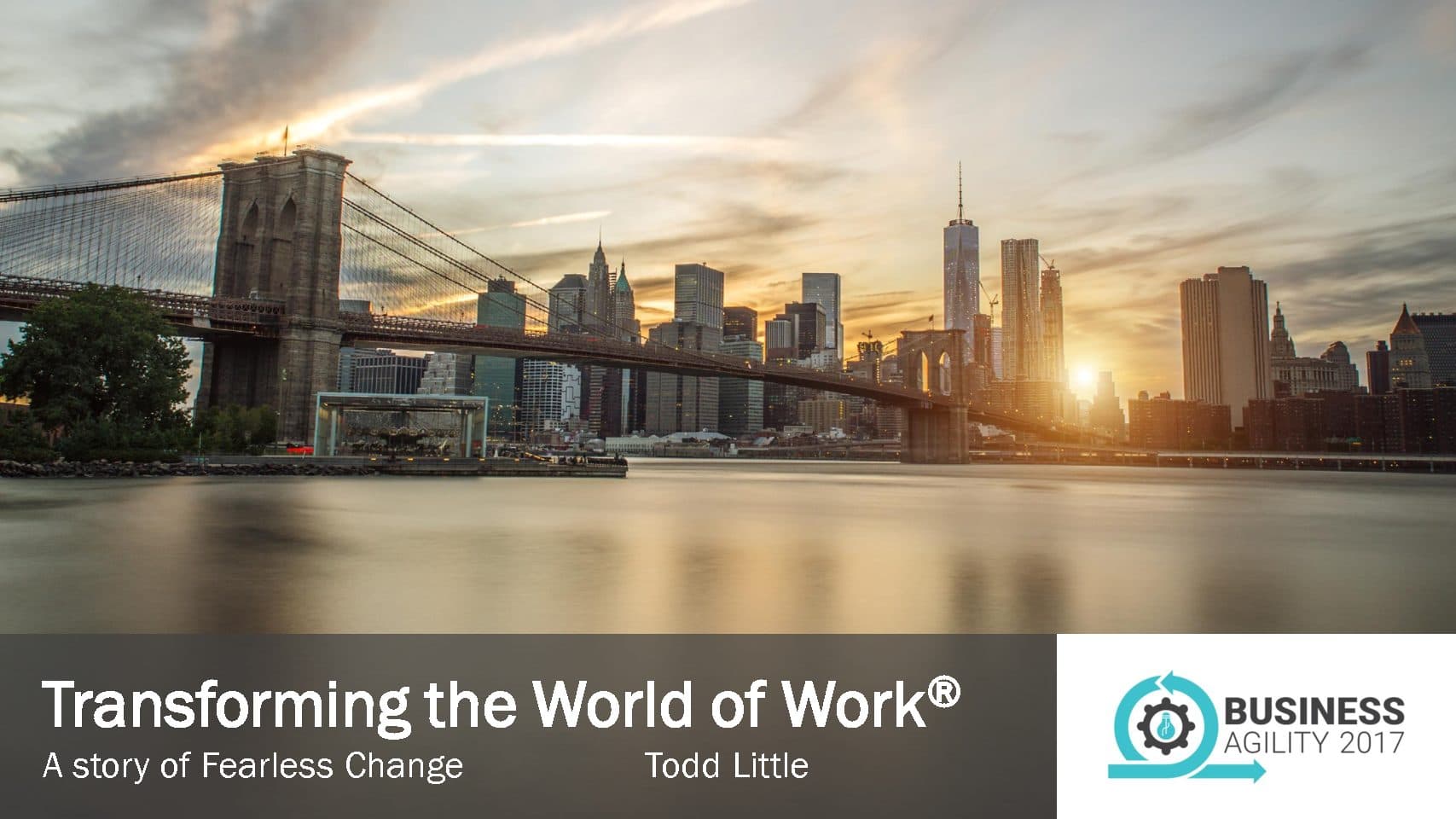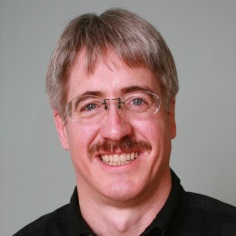The title of my talk is "Transforming the World of Work." This phrase is actually the slogan of the Scrum Alliance, though my talk has nothing specifically to do with them. I just like the slogan as an indication of what we set out to do. In reality, this talk is about how we started the first Agile Development Conference. The end result did, in fact, have a major influence on transforming the world of work and even on the Scrum Alliance itself.
This is a true story—my true story. If it involves any alternative facts, that’s because I’m the one telling it, and I get to do that. That’s how storytelling works now.
The Story Begins
A guy walks into a bar. Sounds like a good idea, right? Well, that guy was me, and it changed my life. So how did this happen?
First, a little about me. I’m a chemical and petroleum engineer. What does that have to do with agility? Quite a lot, actually. The principles I learned in my field align well with agility, which is part of the reason why it resonated with me so strongly when I entered the software world.
I've held executive roles in product development at Landmark, Halliburton, and IHS. I was a pioneer in the Agile community and helped build it. I served on the board of the Agile Alliance for seven years and co-founded the Agile Leadership Network. I co-authored the book Stand Back and Deliver, which, as you can see here, includes a tagline: "Accelerating Business Agility." We wrote this in 2009—so thank you, Evan, for finally validating our book.
The Night at the Bar
The story begins in April 2002. The Cutter Consortium was hosting an event, bringing together many of the luminaries from the Agile Manifesto. One evening, they organized a gathering at the MIT Museum. Afterward, a group of us dropped into the Miracle of Science bar in Cambridge, Massachusetts.
At some point during the night, Alistair Cockburn pulled out a few pieces of paper with logo designs on them. He was doing an informal survey, asking which one we liked best. He mentioned he was thinking of running a conference. We talked about it, and I shared my experience running successful conferences at Landmark. The conversation quickly shifted from just a logo discussion to how he could design the best possible conference.
Dan Reed, my wingman that night, was there as well. He started telling stories about our past conference experiences, including one where we brought in the Fish Philosophy guys (before they even wrote their book). Their big thing was throwing fish across the room as a way to demonstrate the importance of fun and engagement in work.
Dan, of course, had his own version of events. According to him, Shamu was jumping over the Alamo. That’s how fish stories go, right?
Building a Community
Our conferences weren’t just about knowledge-sharing; they were about building a community. At Landmark, we were acquiring a lot of companies, and our value proposition was integrating all of their software. But we knew that without integrating the people first, we would never have well-integrated software.
This idea resonated with Alistair. I told him, "You're not just building a conference—you’re building a community and changing the world of work." He agreed and said, "Let’s do it."
The Plan Takes Shape
The next night, Alistair and I met again to refine our ideas. And yes, agilists do document things! Here’s an example of our "just enough" documentation from that meeting. Later, when Alistair visited Houston, we created another set of notes, refining our plan even further.
The Stakeholders
The key players in making the Agile Development Conference a reality were:
- Ken Schwaber
- Alistair Cockburn
- Jim Highsmith
- Mary Poppendieck (then treasurer of the Agile Alliance)
- Robert "Uncle Bob" Martin
At the time, Uncle Bob was also organizing the XP Agile Universe conference, which created some initial friction. There was concern about competing conferences, but ultimately, we agreed that the Agile Alliance would support this event, and Uncle Bob joined in.
We also had great sponsors in ThoughtWorks and Microsoft, who supported the event without imposing constraints.
Managing Conflict
With so many passionate people involved, conflict was inevitable. Alistair wasn’t happy at times, feeling that this was his conference and he wanted things done his way. But he wasn’t the only one—many had strong opinions.
One thing I learned from a boot camp with Jim McCarthy is that conflict isn’t necessarily bad. If we start with integrity and passion, conflict is the next step toward achieving greatness—if managed well.
The real challenge is how to handle conflict productively. I’ve found that aligning people to a common purpose helps resolve conflicts while keeping creative tension alive.
Dealing with Uncertainty
Starting a new conference comes with uncertainty—primarily around attendance. I applied a "real options" approach to budgeting, treating costs and revenue as variable elements tied to attendee numbers. This flexible financial model helped ease concerns and reduce conflict.
The Right People Show Up
During this journey, I met amazing people, including Pollyanna Pixton. We connected at an event in Salt Lake City, where she shared her experience implementing Agile-like practices at a Swiss bank in the '90s.
Alistair and I had dinner with her, and that relationship became instrumental in shaping the conference. Pollyanna also became my book co-author. When I pointed out that all collaboration books are written by a single person, she said, "Oh crap, you’re right. Let’s write one together."
Fearless Change
Through the conference, I also met Linda Rising and Mary Lynn Manns, who were working on their book Fearless Change. That book became foundational for spreading agile ideas.
The first Agile Development Conference was a four-day conversation, but it sparked an ongoing, global dialogue. We had fun, built a community, and created something that lasted.
Growth and Evolution
In year two, we merged with XP Agile Universe, growing attendance significantly. The conference continued to evolve, and today, Agile conferences have grown to over 25,000 attendees worldwide.
Key Takeaways
- Create and seize opportunities.
- Stay focused on purpose.
- Even brilliant people struggle in new domains.
- Bound uncertainty with real options.
- Resolve conflict by aligning to purpose.
- Let the right people show up.
- Be fearless.
That’s my story. Thank you very much!




